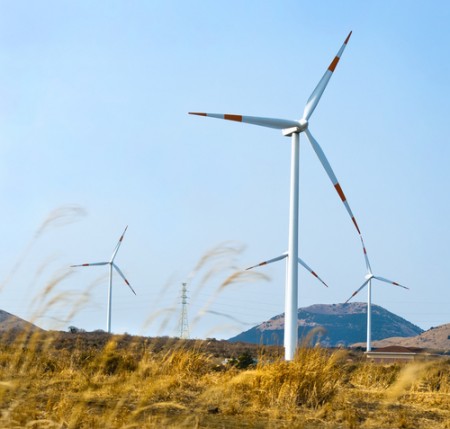By Chris Busch, BlueGreen Alliance
The BlueGreen Alliance was pleased to have a presence last week in South Korea at the invitation of the U.S. Embassy as part of the State Department’s Speaker and Specialist Program. With this opportunity, we were able to fully present our unique model for broadening support for green job growth beyond the environmental community. Korea has achieved rapid economic growth and infrastructure development, and continues to gallop forward today. From labor unions to local and state government to researchers and students to NGOs, we were able to showcase the successes of BGA forging cooperation between unionists and environmentalists.
There are increasing links between the U.S. and South Korea (the Republic of Korea), including the announcement on October 10 of a new agreement establishing the U.S.-Korea Clean Energy Technology Partnership aiming to strengthen bilateral cooperation in clean energy technology research and development. The two countries are also collaborating to promote mutually beneficial green growth. In 2010, Korea launched a green growth strategy that includes reducing heat-trapping emissions by 30 percent from the current trajectory, vehicle fuel economy standards, and a domestic emission trading program.

In addition to Korea’s commitments to leading on green growth and reducing global warming pollution, more Koreans graduate from college than in the U.S. while 90 percent of their population has access to broadband compared to our 65 percent. Which points out a valuable insight: if we fail to make the investments in infrastructure and education that will sustain our future sustainable prosperity, this generation will be the first to leave next in a less favorable position. America has much to be proud of but ignoring our fraying infrastructure and troubled school systems is a sure recipe for decline.
A consistent theme across audiences was frustration with the lack of U.S. action and involvement on climate change. Other countries are looking for the U.S. both to do more domestically to reduce our emissions and want the U.S. to be playing more of a leadership role in the international arena. While acknowledging the need for more progress at the federal level, there has been more happening than most audiences outside of the U.S. probably recognize. For example, under the Recovery Act, the government invested $93 billion in renewable energy and energy upgrades, and have increased vehicle emission standards under Clean Air Act authority.
Everyone was pleased to hear about the continued forward progress on combating climate change in California, with the adoption just this year of a 33 percent Renewable Electricity Standard and 75 percent recycling standard, as called for in the California Apollo Program. Also front and center was the No on Prop 23 campaign, which strongly rejected a challenge to California’s framework Global Warming Solutions. After Prop 23 failed, more California votes than ever (73 percent agreed with the statement that “California can reduce greenhouse gases and expand jobs and economic prosperity at the same time.”
Sometimes the challenges seem almost insurmountable as we struggle to make the case for an effective responsible to our American jobs crisis. Though forging agreement among diverse groups isn’t easy, we can’t let up in our efforts to promote measures like Jobs 21! and the President’s jobs plan. This trip is a reminder our unique labor-environmental partnership has a crucial role to play in responding to the moral imperative of our unemployment emergency and in restoring American leadership in the endeavor to put the planet on a path to sustainable prosperity.
![]() Editor’s Note: This column comes to us as a cross post courtesy of BlueGreen Alliance. Author credit for the column goes to Chris Busch.
Editor’s Note: This column comes to us as a cross post courtesy of BlueGreen Alliance. Author credit for the column goes to Chris Busch.